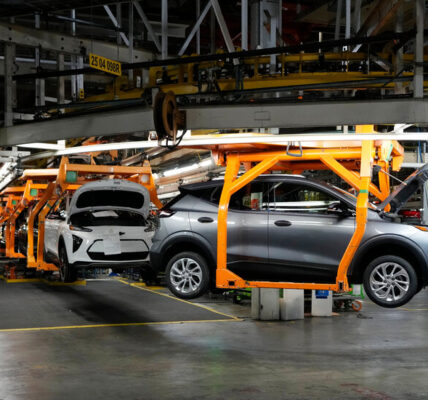Inflation remained essentially flat in April while showing signs of progress, the Commerce Department reported Friday, in a closely watched measure that will guide the Federal Reserve in any decision to loosen interest rates in the coming months.
The Personal Consumption Expenditures price index rose 2.7 percent from a year earlier, the same level as in March. After stripping out volatile food and fuel prices for a clearer reading of price trends, inflation remained steady at 2.8 percent on an annual basis.
On a monthly basis, inflation also remained flat, with prices rising 0.3 percent in April. The “core” index that strips out food and fuel showed a slight moderation, with the index rising 0.2 percent from the previous month, compared with 0.3 percent in March. That was the best monthly core reading since December 2023.
“The second quarter is off to a slow start, with declines in consumer spending and real incomes,” said Bill Adams, chief economist with Comerica Bank. “A margin of slack is opening in the U.S. economy, and that’s making it harder for businesses to pass on price increases to their customers, and that’s going to slow inflation.”
The numbers were largely in line with expectations and are unlikely to change the Fed’s calculus as it waits for firmer evidence that inflation is headed back toward its 2 percent target.
After falling rapidly last year, inflation has leveled out through the spring months, propelled by a number of sticky categories that have prevented price growth from slowing to the degree that Fed officials would like.
To some extent, that reflects what some have called “catch-up inflation,” as industries like health care and insurance — which don’t change prices as smoothly as manufacturing, for example — start passing along increases in their own costs.
Getting all the way back down to 2 percent inflation is starting to look more difficult. Factors that had pushed up prices — such as supply chain snags — have largely been resolved. Economists at the Cleveland Fed recently estimated that it could take several years, as “intrinsic” inflationary forces persist.
Fed officials may see weakening demand as one sign that inflation is poised to fade further. Consumer spending growth has been slowing gradually but remains above prepandemic levels, while retail sales have plateaued. Overall economic growth slowed markedly in the first quarter.
In the April report, consumer spending slowed even more, rising 0.2 percent from the previous month, not adjusted for inflation.




